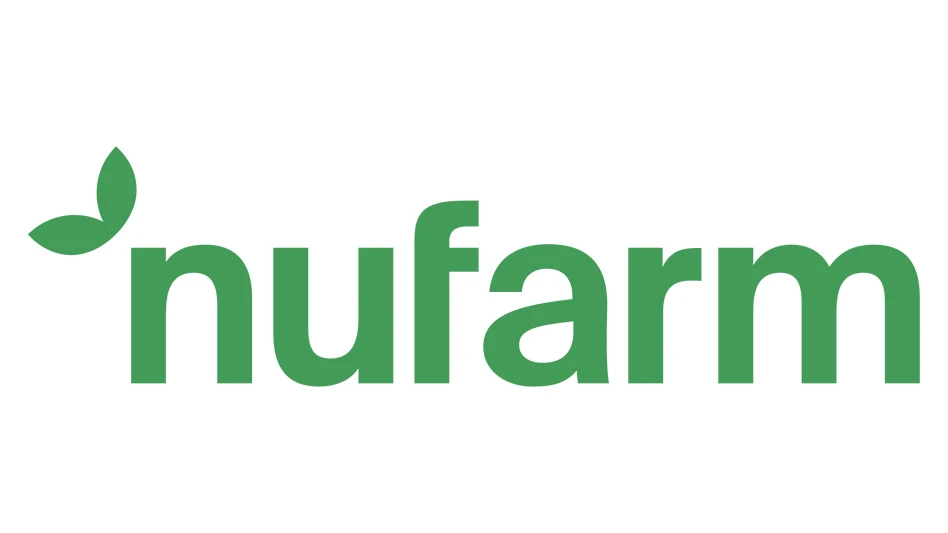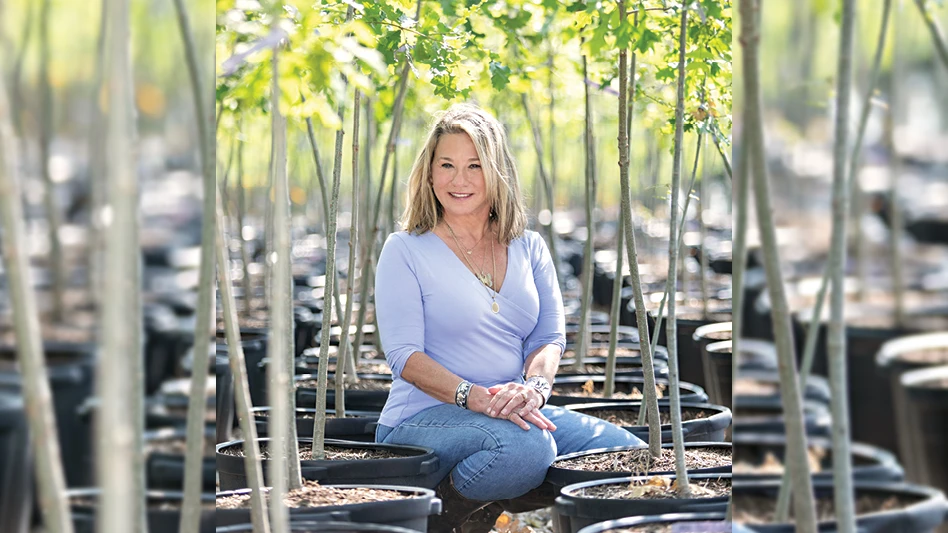 Tweets, posts, pins and circles have the power to improve sales, launch innovation and drive you mad. Social media platforms have transformed the way businesses of all sizes communicate throughout the supply chain. Does your social media strategy whisper or bellow?
Tweets, posts, pins and circles have the power to improve sales, launch innovation and drive you mad. Social media platforms have transformed the way businesses of all sizes communicate throughout the supply chain. Does your social media strategy whisper or bellow?
Find out if you need a few tweaks to your approach or a complete overhaul.
Social media can be a conundrum. It needs nearly constant attention but it creates relationships. It gets people talking about products and services but information has a short shelf life. It provides massive marketing opportunities but has the potential to expose your company’s weaknesses.
You can’t run from it. Well, you can, but you’ll be left in a lonely part of the business world. Instead, create a formal plan regarding how your company will use social media platforms, who you expect to target, and assign someone (or two ot three people) the task of keeping it all in shape.
Just like with any business tool, there are the leaders, the followers and the naysayers in the world of social media. No matter the category in which you belong, we’ve compiled tips from experts to improve your social media marketing strategy.
Dos and don’ts
Don’t use social media to overtly market or sell. Instead educate, enlighten, inform and entertain your audience, said Dave Nelsen, founder of TalkShoe, a service that provides interactive discussions, podcasts and audioblogs. In this way, you’ll position yourself and your company as an expert in your field.
Do the same up-front planning you would for any important business initiative, Nelsen said. Define your target audience and detail how you intend to create value for them. Map out how you expect them to create value for you. Document your approach and objectives for each platform, he added.
One of the most exciting things about social media is you’ll learn from your audience. Followers will suggest valuable ideas you may have never thought of, he said.
It’s OK to repurpose content, said Ashley Zeckman, marketing manager at TopRank, a digital marketing agency. But don’t spit out the same message on all social media platforms. Change elements of your posts to either highlight different information within the post or target a different segment within your audience, she said.
Take the time to interact with customers and prospects. A simple tactic for social media interaction is to ask questions that inspire a response, she said.
| Did you know? A study by Experian Marketing Services revealed that if the time spent on the Internet for personal computers was distilled into an hour, then 27 percent of it would be spent on social networking across the U.S., the U.K. and Australia. In the U.S., 16 minutes out of every hour online is spent on social networking and forums, 9 minutes on entertainment and 5 minutes shopping. |
Should something negative about your company, product or service appear on social media, don’t ignore it. Have what Zeckman calls an emergency preparedness plan ready if, or when, that happens. Don’t ignore your audience.
Don’t have a social media account just to have one. You must commit to using a platform on a regular basis, she added.
Next, let’s dig into the specific platforms and learn how to get the most out of each one.
Facebook
If you quickly threw together your “about” section on Facebook months or years ago, it’s time for a review, said Alvaro J. Soltero, co-founder The Social U, a social media blog for college students and people in higher education.
The “about” section includes a short description, company overview, description, email and website. Your company’s description is the first piece of information about your business any visitor reads. Keep it succinct but clarify who you are and what you offer, Soltero said. Describe what makes you different, he added. And don’t forget to include your website URL.
With Facebook cover photos, Soltero said businesses have a valuable banner space above their page. The cover photo can make a page, so choose carefully and be creative.
One of the most important things to learn about Facebook is EdgeRank. It is the newsfeed algorithm that decides what comes up on your page and what doesn’t, he explained. The more someone interacts with your page’s posts, the more posts from your page will be shown to that person. The more people that interact negatively with your post (such as selecting “hide” or “report for spam), the less newsfeeds your post will appear on, he said. Simply, more engagement equals greater exposure.
If you’re not posting many pictures, change your strategy. Images are king, he said. Based on Soltero’s page analytics, he’s discovered that images perform significantly better than links or text posts.
Smart posting is one thing. But are you measuring Facebook’s success? Facebook gives users an enormous amount of data for their page under “Insights,” he said. These analytics are easy to understand, and include everything from your audience’s demographics to each post’s performance. To learn more about demographics, click on “talking about this” in your Facebook Insights, and you’ll get an age, gender, language and location breakdown of your page’s community, he explained. You should have a well-defined target audience, and this is where you can see if you’re reaching them, he said.
|
With 2,300 varieties and nine brands, Willoway Nurseries has ample material to share on social media. The Avon, Ohio-based grower uses Facebook, Pinterest, YouTube, Google+ and LinkedIn. Danny Gouge, Willoway’s marketing manager, handles the social media posts. “You should be in as many formats as you can manage,” he said. “It takes a commitment, but it’s worth it.” Gouge posts videos from the shipping dock, photos of new varieties, landscape ideas, ways to use plants for decorating and facts about plants and their benefit to health and healing. “I try to put a story to the plants I’m posting,” he said. “It’s a push/pull marketing method. And the exposure on social media has turned some customers around to trying new or different things.” Gouge has a generalized plan and posting calendar based on when things bloom during the shipping season. He also works with marketing managers from the brands that Willoway grows and sells. He also sends out an e-newsletter to 8,000 readers. Between all the platforms, he reaches between 150,000-300,000 people each week. “Most of my viewers are within my shipping lane, but I do have some from all over the world,” he said. And if you want to reach the young consumer, you’ve got to be on some sort of social media platform, he said. For more: www.willowaynurseries.com |
Twitter
There are many people you need to follow on Twitter for business reasons such as customers, suppliers, neighboring businesses, peers and competitors, said Charlene Kingston, founder of Social Media DIY Workshop. But as the number of people you follow grows, it gets harder to hear the important messages among all of the others. Kingston has a valuable solution. Use Twitter lists. Twitter lists are the platform’s most powerful and least-used feature, she said. Lists allow you to group the important people you follow, so you don’t miss an important tweet.
You can create up to 20 different Twitter lists with up to 500 accounts in each list, she explained. You can monitor each list separately using Twitter.com or Twitter tools like HootSuite. And keep in mind you don’t have to put all of your follows into a list, she said.
Did you know Twitter allows you to customize the look and colors of your Twitter profile page? This gives you an opportunity to provide additional information about your business to everyone who checks out your profile, she said. You can create a custom graphic and use it for your Twitter background.
Your Twitter profile bio tells your business story in the length of a text message. That’s a lot of information crammed into just a few words. The best Twitter profiles include these components:
- Tell people what you do
- Explain how you help people
- Show a little personality
Mark your calendar to review and update your Twitter bio in six months, because even the best bio gets stale over time, she said.
When using Twitter, look for replies and mentions. Every time you check Twitter throughout the day, you should first check for direct messages and mentions. Mentions are public messages that include your Twitter handle and direct messages are private messages sent directly to you.
Another Twitter must is search for your business name in case people don’t use your Twitter handle, she said. And make sure to follow everyone who talks to you on Twitter, she said.
Make sure to include your Twitter username on your website, in your email signature, on your business cards, within email newsletters, on paperwork you give to customers and on signs posted at your business, she said.
|
While social media allows plant brand Hort Couture to connect with brokers, growers and independent garden centers, it allows the company to reach a huge consumer base, said Jen Hatalski, merchandising coordinator at Hort Couture. “We interact with everyone in the supply chain,” she said. “We’re trying to keep our business customers in the loop, and get our plants in front of the consumer. Once we connect with them on social media, we direct them back to our website.” On Facebook, Hort Couture shares photos of their products, provides availability of the product and promotes specials. Since Facebook users are customers and consumers, Hatalski must keep content balanced so everyone benefits. “It’s a little tough to talk to the entire supply chain on one platform,” she said. Hort Couture’s Pinterest page hits the consumers more than any other platform. “We’re following 3,000 and have about 2,000 followers. We have 63 boards and more than 1,000 pins,” she said. Pinterest required a larger time investment up front getting the boards set up, but she spends more time on Facebook updating content and keeping it fresh. The company receives more traffic on its website through Pinterest than from any other platform. If you’re not sure who to follow on Pinterest, look at the targeted demographics, she said. “I look for people who are interested in plants, home décor and fashion,” she said. Hort Couture also uses Instagram (new to them this year) and YouTube. For more: www.hortcoutureplants.com |
Pinterest
What better way to present green-industry products than with photos? Pinterest allows our industry to share the beauty and benefits of plants.
Don’t show off your products and services directly. Instead, find creative ways to show how those products and services fit into the lifestyles of your target audience, said Suzi McCoy, founder of Garden Media Group.
Add links to the descriptions of your pins, and pin content that represents your company identity and attracts visitors back to your website. Add the “Pin It” button to your website and all other social media platforms, she said. Just like with other platforms, have a conversation. Repin, like and comment on pins.
Something you may have overlooked when you set up your Pinterest account: be sure to keep “hide your Pinterest profile from search engines” checked to off so your profile can be indexed in a search, she said. Need more help? GMG has a free e-book, Pinterest for Business, at www.gardenmediagroup.com.
Google+
Perhaps the most misunderstood and ridiculed social media platform, Google+ is the platform everyone needs to use, said Travis Foster, creative content specialist at Optima Worldwide, a web presence management company.
Google has leveraged its social media platform into one of the most appealing web presence management tools for businesses, he said.
Foster shares his top reasons to get a Google+ page.
Unrestricted data. Facebook and Twitter restrict Google from accessing much of their data. This means your profiles on Facebook and Twitter won’t rank very well. Google Plus eliminates any restrictions and streamlines your company’s data directly to Google results, he said.
Followed links. You can embed a followed link into your Google+ profile. And you have full control over the link anchor text, which is the text of a hyperlink that the user sees. It provides a description for the user of where the link will take them.
Instant indexing. Google indexes a webpage instantly when shared on Google+. Otherwise, it might take days or weeks for Google bots to come crawl your site.
Optimized sharing. When sharing a link on Google+, your entire first sentence of text is considered the title. This method is easy and accurately indexes your links.
Integrated Google accounts. Gmail, YouTube, Google+, Calendar, Drive, etc. are all combined accounts. Optimizing your Google+ page will flow over to each of these Google tools, making it easy to manage each one.
Circles. Similar to LinkedIn, you can filter your friends, colleagues and family members by posting in certain specific groups called circles.
Improved Google places page. Google+ will create a Places page for your business if you don’t. If you claim your business on Google+, you’ll be able to update your businesses profile with better pictures, hours, directions and a sales pitch.
High Ranking. Google+ pages will often outrank all of your other pages with far less effort. And click-through rates are significantly increased using the rel=”author” tag and specifying a Google+ profile. Your picture will appear beside your article, making it stand out among the rest.
|
Before Rocket Farms started sharing on social media, the Salinas, Calif.-based grower created a formal plan to ensure its campaigns consistently support the Rocket Farms brand. “Social media is integrated into everything we do, including marketing events and our new website,” said Ashley Beleny, public relations representative for Rocket Farms. The grower uses Facebook, Pinterest and Twitter to raise brand awareness and convey flowers as a lifestyle and design element. “There’s an emotional appeal associated with plants, and that’s the message we’re trying to push,” said Jason Kamimoto, vice president of marketing at Rocket Farms. The company uses photos to help tell the story, which typically results in a better response from the social media community. Sometimes Rocket Farms posts photos of new plants, but more often the photos convey ways to use flowers in the home or messages that link flowers and fashion. Other posts teach consumers where to grow plants, how to water them, how to cook with them and how to use them as gifts. Rocket Farms talks exclusively to consumers on Facebook and Pinterest, but uses Twitter primarily for B2B communication. Later this spring, the company plans to train its sales force and teach them how leverage social media to offer added value with their customers, Beleny said. Earlier this year, Rocket Farms used social media to market a fun flower truck promotion (think food truck but with potted plants). In late March, the trucks visited three San Francisco Bay neighborhoods and gave away plants. A week in advance, the grower used social media to post clues about the trucks’ locations, and posted photos the day of the giveaway. Each plant had a card that included all of Rocket Farms’ social media information. “Throughout the day people were liking us on Facebook, posting pictures and thanking us for the flowers,” Beleny said. Social media and projects like the flower truck drive awareness and inspiration, Kamimoto said. For more: www.rocketfarms.com |
Get curated news on YOUR industry.
Enter your email to receive our newsletters.
Explore the May 2013 Issue
Check out more from this issue and find your next story to read.
Latest from Nursery Management
- The HC Companies, Classic Home & Garden merge as Growscape
- Eason Horticultural Resources will now officially be known as EHR
- BioWorks receives EPA approval for new biological insecticide for thrips, aphids, whiteflies
- Ellen Mackenbach-Lakeman appointed new CEO of Dümmen Orange
- Southern Garden Tour sets 2025 dates for trial garden open houses
- New book explores plants that thrive in Rocky Mountains
- American Floral Endowment establishes Herman Meinders Memorial Tribute
- These companies are utilizing plastic alternatives to reduce horticultural waste

 Willoway Nurseries
Willoway Nurseries  Hort Couture
Hort Couture Rocket Farms
Rocket Farms 





